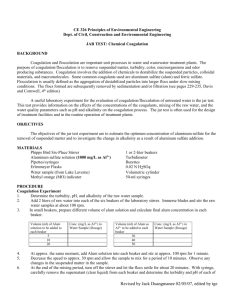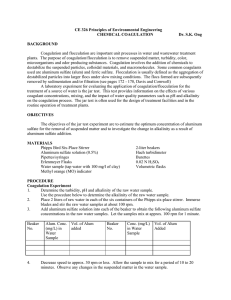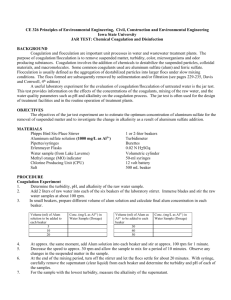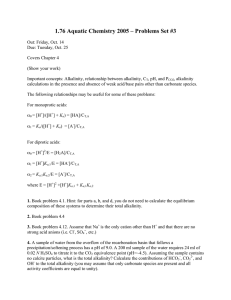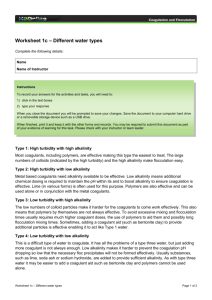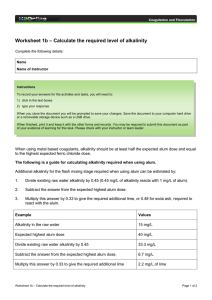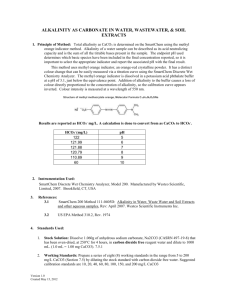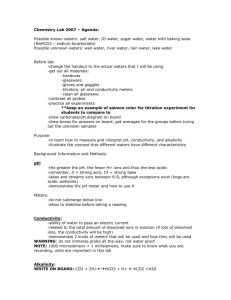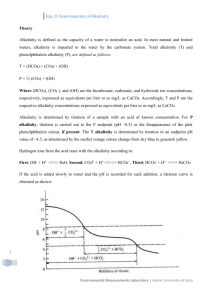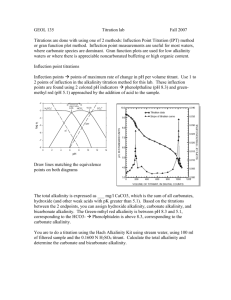CE 326 Principles of Environmental Engineering JAR TEST
advertisement
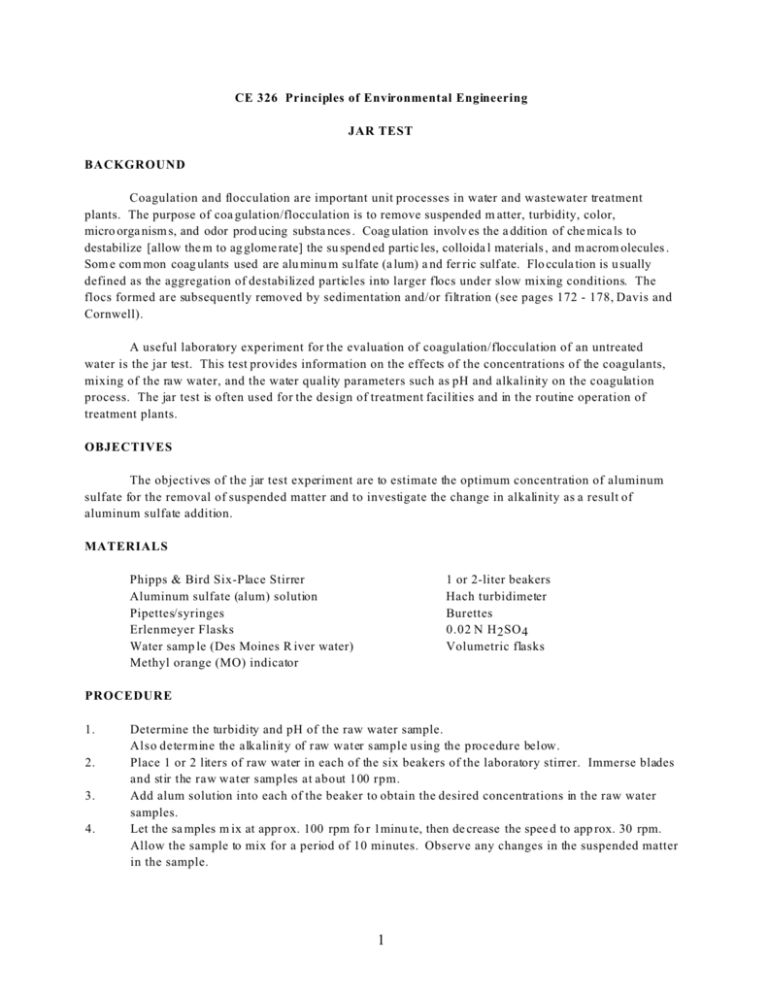
CE 326 Principles of Environmental Engineering JAR TEST BACKGROUND Coagulation and flocculation are important unit processes in water and wastewater treatment plants. The purpose of coa gulation/flocculation is to remove suspended m atter, turbidity, color, micro orga nism s, and odor prod ucing substa nces . Coag ulation involv es the a ddition of che mica ls to destabilize [allow the m to ag glome rate] the su spend ed partic les, colloida l materials , and m acrom olecules . Som e com mon coag ulants used are alu minu m su lfate (a lum) a nd fer ric sulf ate. Flo ccula tion is u sually defined as the aggregation of destabilized particles into larger flocs under slow mixing conditions. The flocs formed are subsequently removed by sedimentation and/or filtration (see pages 172 - 178, Davis and Cornwell). A useful laboratory experiment for the evaluation of coagulation/flocculation of an untreated water is the jar test. This test provides information on the effects of the concentrations of the coagulants, mixing of the raw water, and the water quality parameters such as pH and alkalinity on the coagulation process. The jar test is often used for the design of treatment facilities and in the routine operation of treatment plants. OBJECTIVES The objectives of the jar test experiment are to estimate the optimum concentration of aluminum sulfate for the removal of suspended matter and to investigate the change in alkalinity as a result of aluminum sulfate addition. MATERIALS Phipps & Bird Six-Place Stirrer Aluminum sulfate (alum) solution Pipettes/syringes Erlenmeyer Flasks Water samp le (Des Moines R iver water) Methyl orange (MO) indicator 1 or 2-liter beakers Hach turbidimeter Burettes 0.02 N H 2 SO 4 Volumetric flasks PROCEDURE 1. 2. 3. 4. Determine the turbidity and pH of the raw water sample. Also determine the alkalinity of raw water sample using the procedure below. Place 1 or 2 liters of raw water in each of the six beakers of the laboratory stirrer. Immerse blades and stir the raw water samples at about 100 rpm. Add alum solution into each of the beaker to obtain the desired concentrations in the raw water samples. Let the sa mples m ix at appr ox. 100 rpm fo r 1minu te, then de crease the spee d to app rox. 30 rpm. Allow the sample to mix for a period of 10 minutes. Observe any changes in the suspended matter in the sample. 1 5. 6. At the end of the mixing period, turn off the stirrer, let the flocs settle (at least 20 minutes) and carefully remove the supernatant from each beaker and determine the turbidity in each of the samples. Determine the pH of each treated water sample. Measure the alkalinity of the sample with the largest alum concentration. Alkalinity Measurement 1. Add 50 m L of water samp le (V s ) to an erlenmeyer flask 2. Add 2 to 3 drops of methyl orange indicator 3. Read the starting volume of standard 0.02 N H2 SO 4 on the burette. Titrate water sample with standard 0.02 N H2 SO 4 until color changes from yellow-orange to red. 4. Read the final volume of the ac id in the burette. Record volume used (V a ). 5. Com pute a lkalinity as follo ws: Alkalinity (in mg/L CaCO 3 ) = [mL acid (V a ) x Normality of acid x 50,000 ] / [mL sample (V s )] RESULTS Beaker # Dosage 1 2 3 4 5 6 Turb idity pH Alka linity REPORT FORMAT Introduction Describe the purpose of jar testing and summarize the theoretical background. Expound on the inform ation th at is pre sente d in this hand out. Procedure Describe the experimental procedure. Results Repo rt all resu lts in a T able fo rmat. Plot turbidity and pH as a function of coagulant dose. Discussion What is the best coagulant dose? Why did the pH change? Why did the alkalinity change with dose? Compare the measured alkalinity change with that of the theoretical alkalinity change requirements? See page 173 in the textbook. Conclusions 2
